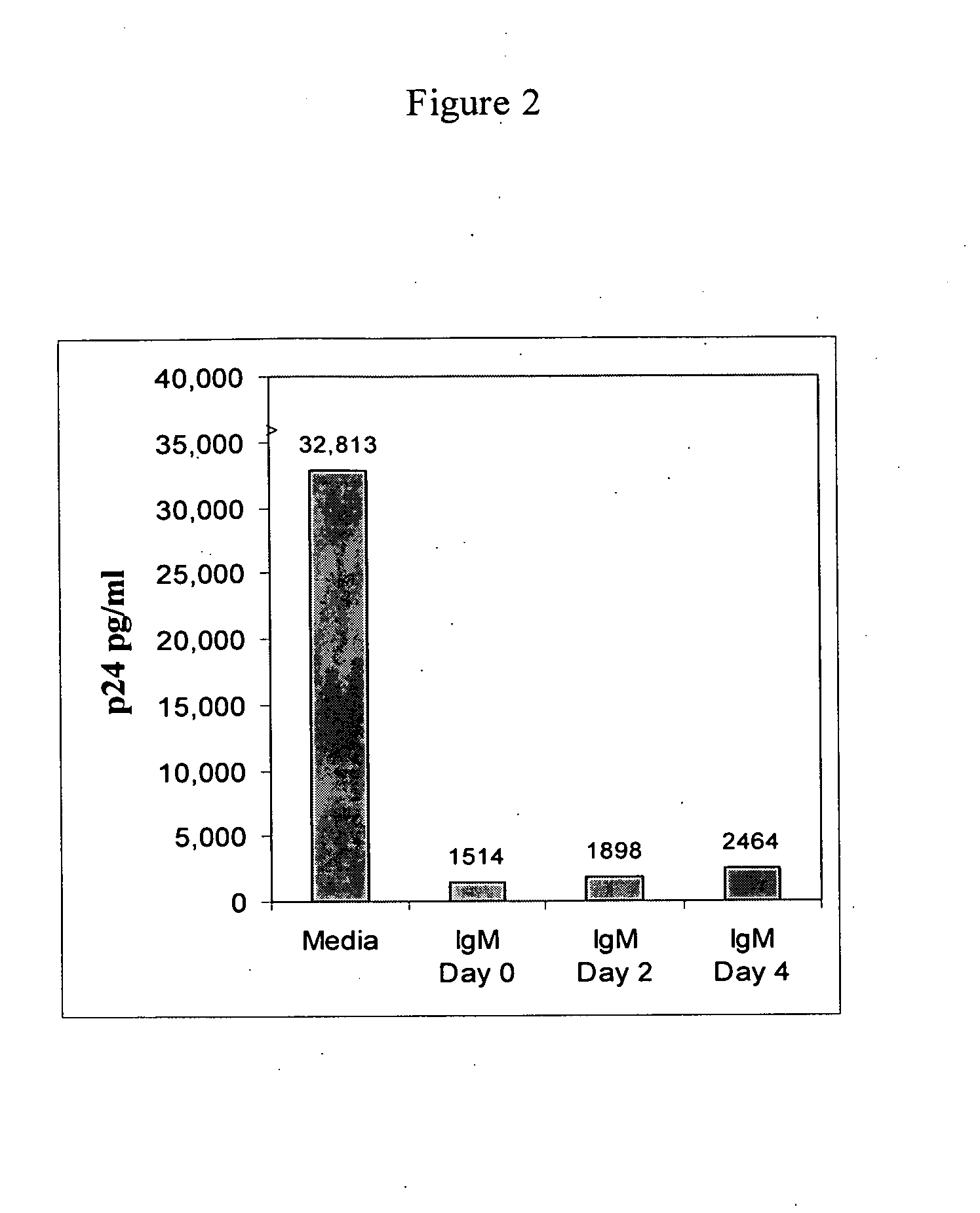Naturally occurring IgM antibodies that bind lymphocytes
a technology of anti-lymphocytes and natural igm, which is applied in the field of natural igm anti-lymphocyte antibodies, can solve the problems of insufficient proof, auto-immune diseases, and insufficient prior art to directly, and achieve the effects of inhibiting the production of certain pro-inflammatory cytokines, blocking multiple viral isolates, and inhibiting viral entry into cells
- Summary
- Abstract
- Description
- Claims
- Application Information
AI Technical Summary
Benefits of technology
Problems solved by technology
Method used
Image
Examples
Embodiment Construction
[0179] While not wishing to be bound to any particular theory, there are several possible explanations for the entry of the HIV-1 virus into cells and increased viral replication despite the presence of a good levels of naturally occurring IgM autoantibodies to CD4 and chemokine receptor during the asymptomatic state. One such explanation is the possibility that there exists a delicate balance between these low-affinity binding IgM antibodies and the viral load. Factors that predispose an individual to an increased viral load or that inhibit the B cells secreting IgM autoantibodies will lead to viral entry into cells and to disease progression. It is also possible that the recently described subset of B cells expressing CD4, CXCR4 and CCR5 receptors may be the same subset that secretes such IgM autoantibodies. Over several months or years, this B cell subset could be exhausted or could be infected with HIV-1, thereby leading to a decrease in antibody production. Additionally, one ca...
PUM
| Property | Measurement | Unit |
|---|---|---|
| temperature | aaaaa | aaaaa |
| pH | aaaaa | aaaaa |
| pH | aaaaa | aaaaa |
Abstract
Description
Claims
Application Information
 Login to View More
Login to View More - R&D
- Intellectual Property
- Life Sciences
- Materials
- Tech Scout
- Unparalleled Data Quality
- Higher Quality Content
- 60% Fewer Hallucinations
Browse by: Latest US Patents, China's latest patents, Technical Efficacy Thesaurus, Application Domain, Technology Topic, Popular Technical Reports.
© 2025 PatSnap. All rights reserved.Legal|Privacy policy|Modern Slavery Act Transparency Statement|Sitemap|About US| Contact US: help@patsnap.com



